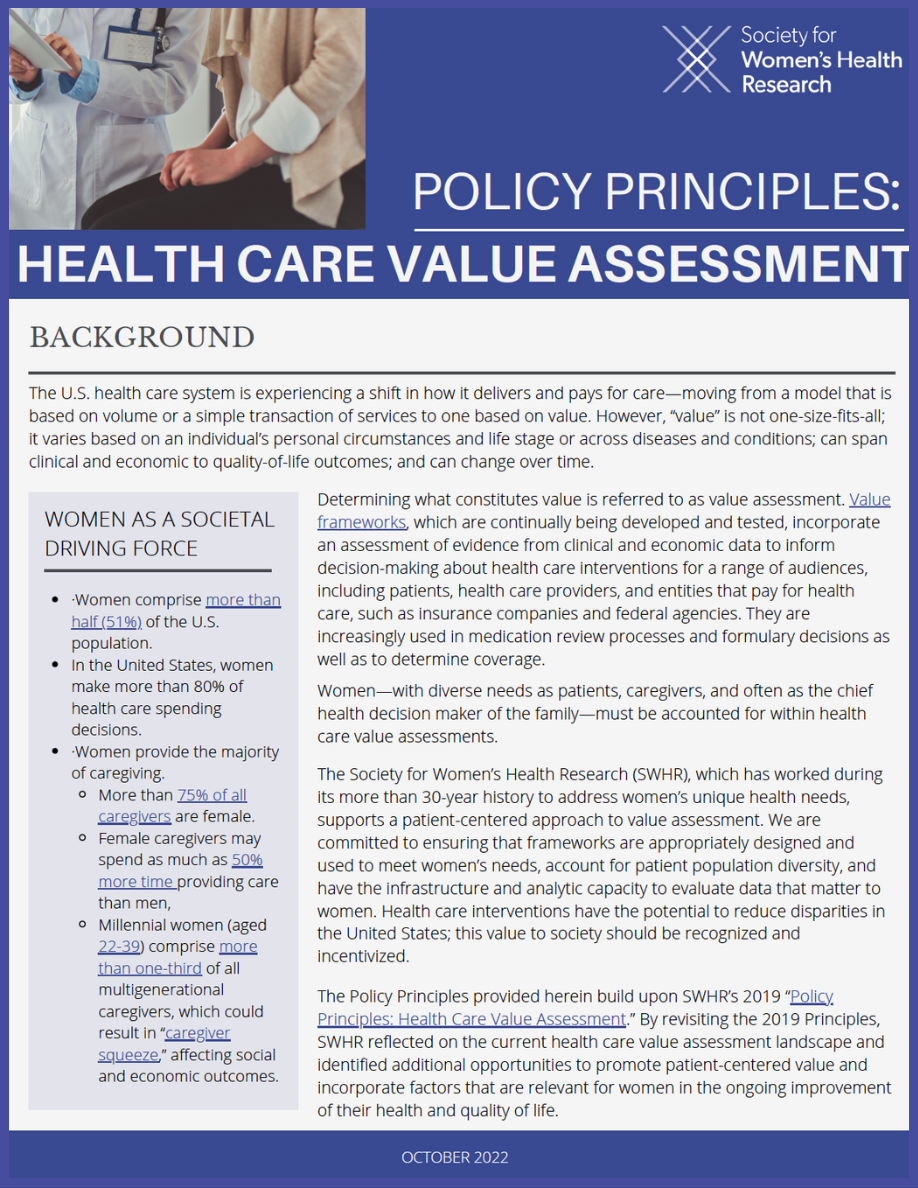In 2019, SWHR conceived a set of principles to help ensure value frameworks and assessments reflected factors relevant to women in the ongoing improvement of their health. This year, SWHR has revisited and updated this framework to reflect the ongoing shift in how the U.S. health care system delivers and pays for care.
By revisiting the 2019 Principles, SWHR had the opportunity to reflect on the current health care value assessment landscape, identify additional opportunities to promote patient-centered value, and incorporate factors that are relevant for women, who have diverse needs as patients, caregivers, and often as chief health decision makers of the family.
Download SWHR’S 2022 Health Care Value Assessment Principles
